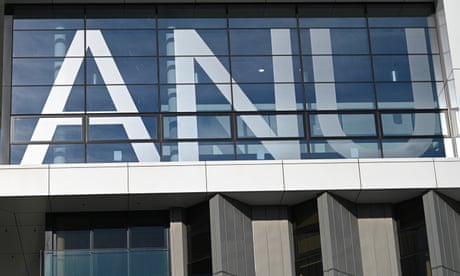Australia could be a smart nation that values education – instead it is riding the latest wave of dumb luck | Peter Lewis

It was the historian Donald Horne who dubbed Australia a “lucky country run mainly by second-rate people who share its luck”. The nation totally missed the point and took the sledge as a cause for self-affirmation.
Sixty years on from the publication of his misunderstood critique of Australian anti-intellectualism, Horne might be surprised to see education as the nation’s fourth largest export industry after coal, iron ore and gas.
There are grounds to celebrate the rise of an industry driven by brainpower, offering learning to both local students and young people from around the world, generating both hard cash and soft diplomacy.
For capital cities and regional towns with second-tier universities, higher education is an anchor industry, an alchemic repurposing of knowledge into a solid commodity.

But higher education’s business model is under the microscope as the Albanese government hits pause on the growth in international students as the nation grapples with the post-pandemic cost-of-living crisis for which housing availability and rising rents are key drivers.
As this week’s Guardian Essential report shows, the politics behind the cap are compelling. Immigration is being blamed for rising housing prices and the opposition leader is priming to exploit this; a cap on students is a pre-emptive strike that the electorate clearly embraces.
While stemming the student inflow may be smart politics, is it the sort of dumb policy that Horne decried, proving his observations that Australian intellectuals are “treated more as suspects than witnesses”?
The major universities have accused the government of knee-capping the sector and forcing it to cut back on funding for local students, rightly asking what other industry could survive a unilateral 10% cut in income.
They have a point. After 40 years of scaled-back public investment, the international students are the sector’s golden goose, the product of decisions by successive governments to turn universities into self-funding enterprises free of public funding obligations.
Bob Hawke’s “clever country” created today’s market: recasting tertiary education as the right of every child, converting colleges into regional unis to meet this aspiration. “Free” education become “education on credit” via a deferred debt system, while universities were for the first time allowed to offer full fee degrees to international students.
The Howard government exploited Labor’s shift to the academy, lionising the tradie and cleaving them from organised labour. But behind the inverted class war it embedded the sector’s business model, integrating it with the immigration system, transforming student visas into a pathway to residency and citizenship.
Then Julia Gillard locked in the tertiary sector as the end goal for all local students through Naplan, a universal testing regime that focused students, teachers and schools on the pursuit of the academic scoreboard from the early years of education.
To be clear, despite support for the cap the public is onboard with this industrial model. For a nation whose wealth is driven by the export of resources, most see the education sector as a more critical pathway to national wealth than mining.
But dig deeper and cracks emerge; with those at the coalface arguing the corporate industry that has emerged is just as extractive as the economic models Horne’s lucky country critique lambasted.
Academics aspire to rolling contracts and bemoan how business priorities have displaced educational mission; with aggressive marketing by people who have little understanding of what they are selling and university councils stacked with suits.
Local students wonder if there is more to university life than Zoom lectures and cursory tutorials, the cultural tumbleweeds rolling through campuses, especially since Covid began, that used to be a critical part of the tertiary education experience.
International students sold the dream of experiencing Australia find themselves in university classes filled with outsiders like them, rarely meeting locals while plugging the gaps at the bottom end of the labour market.
Meanwhile, the broader community sees the conspicuous development of major universities, the seven-figure salaries of vice-chancellors and the congestion around campuses and wonder who really benefits from the industry’s success.
A final question speaks to a broader challenge for the tertiary education sector; despite its growth and success few Australians see it as contributing to a more intelligent nation.
As with Horne’s original lucky country provocation it seems we’re in danger of drawing the wrong lessons from our success. If our education industry makes us richer but dumber, is it really a system of higher learning or just another market transaction where credentials are dispensed like a medieval church selling indulgences?

The gap between mission and model afflicts all industries where a public good is taken to market. Housing is trapped between wealth creation and the human right to shelter. Aged care creaks under the demands of regulated market model. But for higher education these contradictions demand deeper thought.
While the federal government has a technocratic compact with universities, maybe it’s time for a broader social compact with the rest of us that lets the sector earn the licence to keep growing.
Universities basing their business model on educating international students could tap their significant property portfolios to provide them with housing on or near campus, so they are not competing for affordable rentals.
Why stop there? Becoming a driver of affordable housing for local students and staff would go a long way towards reducing the industry’s footprint, while building the shared sense of community that made university such a life-changing experience for earlier generations.
Based on their latest numbers, universities have an accumulated $5.3bn at hand, the University of Sydney with $1bn alone. That’s more than the federal government has invested in its national affordable housing fund.
Providing young people with not just an education but a home would be a real driver of national wealth for a smart nation that truly values knowledge, rather than one just riding its latest wave of dumb luck.
Peter Lewis is the executive director of Essential and host of Per Capita’s Burning Platforms podcast
Comments
Post a Comment